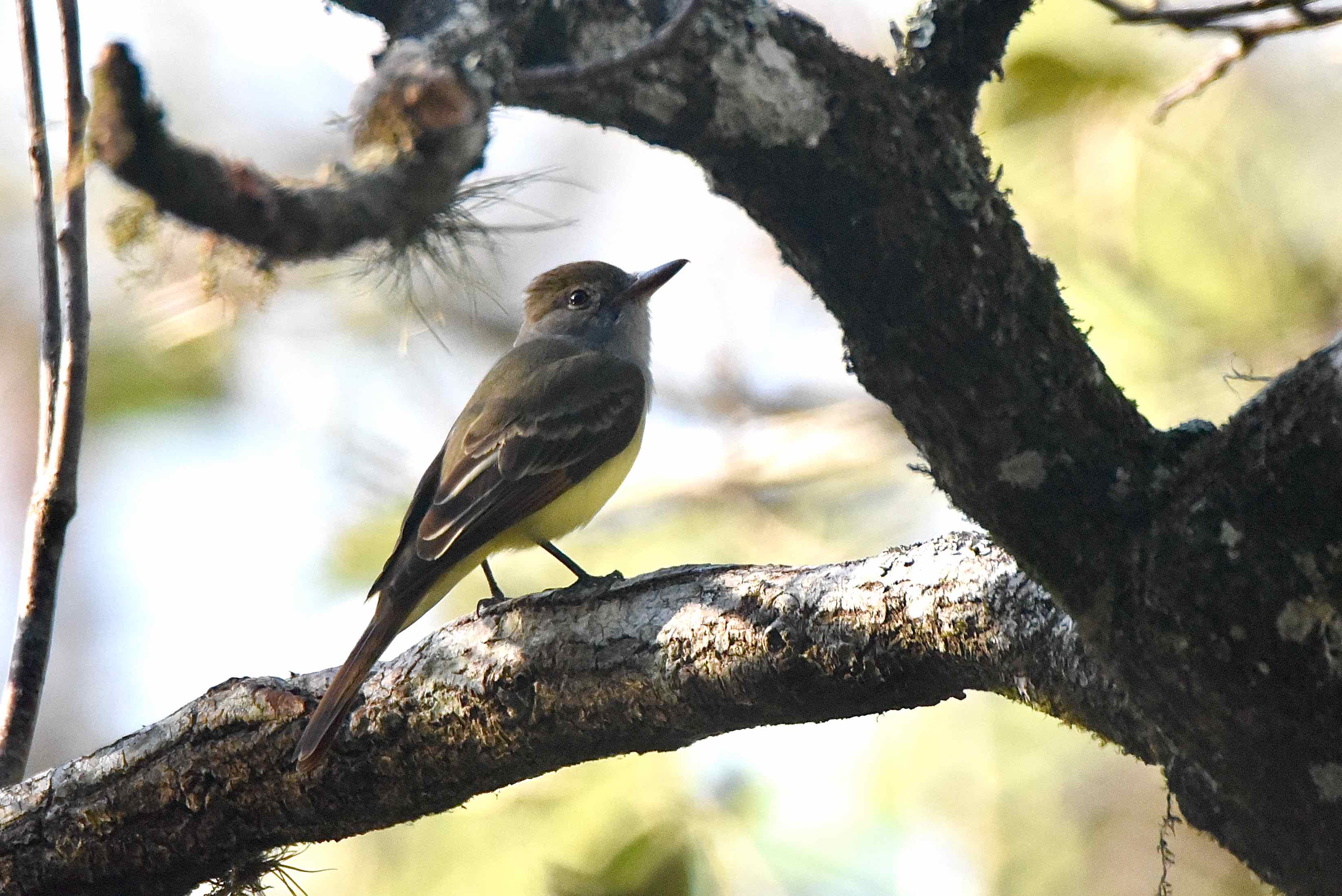
Great crested flycatcher, photographed at Corkscrew Swamp Sanctuary, Naples, Collier County, in February 2020.
The great crested flycatcher, Myiarchus crinitus, with its lemon-yellow belly and cinnamon sides and tail, is among the more colorful members of its family. And one of the easiest to spot, especially here in Florida.
Great crested flycatchers are mostly migratory birds, but there is a year-round population that resides in the southern half of Florida's peninsula. Migrants boost the numbers in winter. Their overall range covers the eastern half of the Western Hemisphere roughly from southern Canada to the northern tip of South America.
They spend summers — breeding season — in the northern portions of their range while enjoying the warmer winters of points south. Central Florida southward into the Keys is roughly the middle ground where year-round residents dwell. They can be on the scarce side in places, particularly in the agricultural lands south of Lake Okeechobee and in the Keys. (We have seen them on Key Largo, however.)
Despite the name, the great crested flycatcher doesn't really have much of a crest. You can see it in full display in the photo above. Really. Great crested flycatchers do have a rather large head and a relatively long, stout bill. As a group, flycatchers are notoriously plain-looking birds, the vermilion flycatcher being the one major exception. But our guy here has a bit of a flare to him. He starts out with a dull gray head — with a few brown notes — but then there is that yellow belly and cinnamon wings and tail feathers that are eyecatching, particularly in the right light.
They are large as flycatchers go, with a body length that can exceed eight inches and a wingspan of more than 13 inches. Males and females look alike.
Great crested flycatchers are denizens of deep forests, open woods and the edges of woods. In Florida, they're found in the suburbs as well. They prefer hardwood and mixed-wood forests over stands of conifers. They tend to perch high in the tree canopy, where they can defend their territory and hunt for myriad bugs, including wasps, butterflies, beetles, dragonflies, grasshoppers and more. They'll also eat a variety of fruit, including elderberry, cherries and blackberries.
Great crested flycatchers nest in cavities, both natural and otherwise, otherwise including nest boxes, mailboxes and gutters. The nest is a collection of grasses, leaves, pine needles, feathers and often a piece of snake skin. If the cavity is deep, the new occupants might fill it with leaf litter to get the nest to the right height.
In Florida, pairs almost always have one brood per season, with females laying three to six eggs. About two weeks of incubation, with Mom doing the sitting, is required before the eggs hatch; the offspring need about two more weeks in the nest before they're ready to leave. The young will hang with their parents for as long as three more weeks, then strike out on their own. Males stake out or return to their breeding territories in late March or early April. Great crested flycatchers aren't necessarily monogamous but breeding pairs sometimes reunite and use the previous year's nesting cavity.
Great crested flycatchers are members of Tyrannidae, the tyrant flycatcher family.
Corkscrew Swamp Sanctuary



